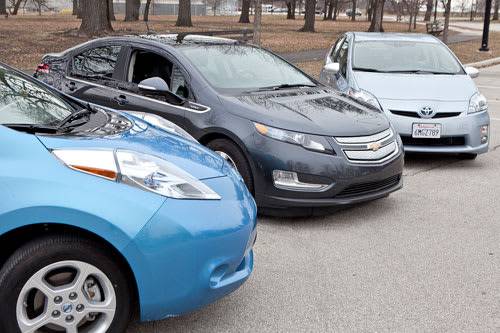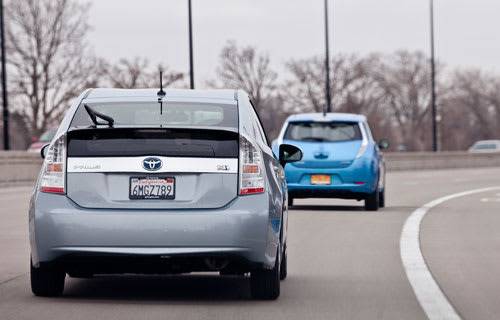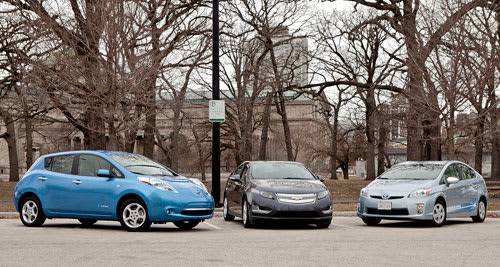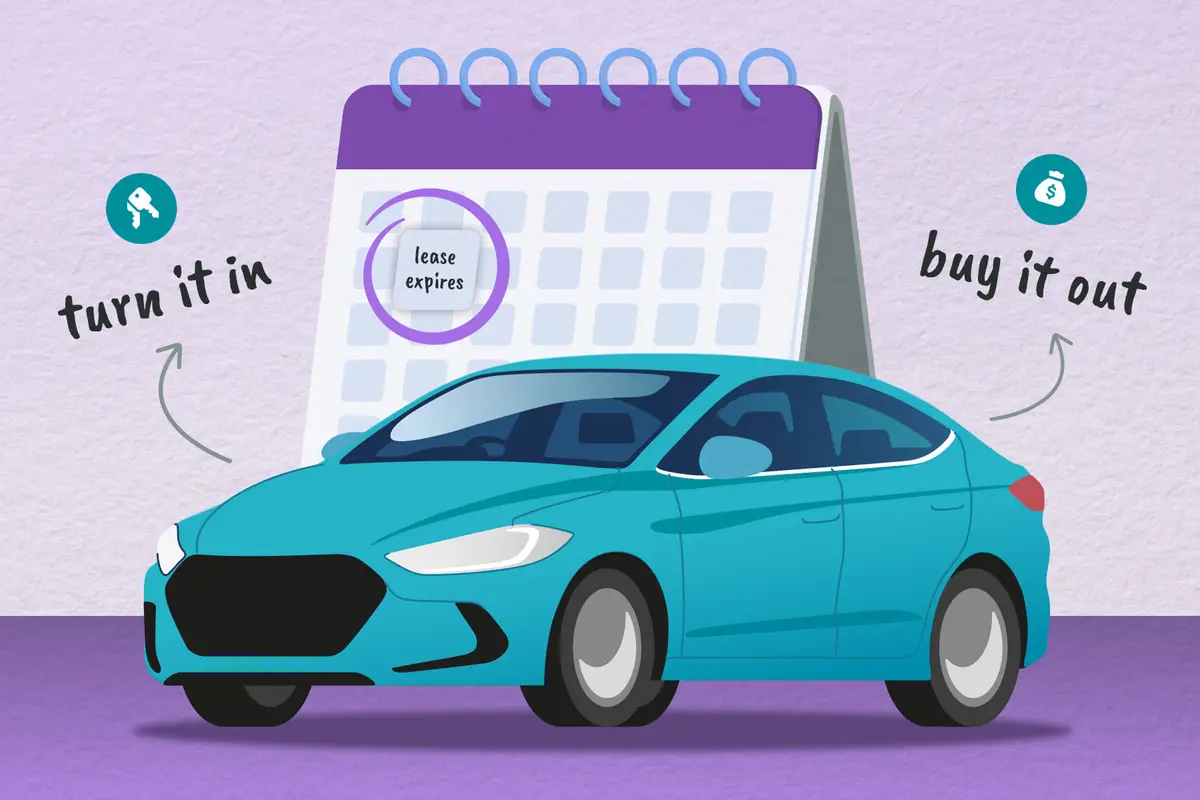Head To Head: Three Plug-Ins


This type of Prius, which Toyota calls a Plug-in Hybrid Vehicle or PHV, is a work in progress that’s being refined during this demonstration period before it goes on sale in 2012. So our findings must be taken with that in mind. Overall, we found this test to be an excellent reflection of the three main philosophies with which automakers will approach plug-in vehicles.
Here, we report on the hands-on experience, ranking the cars where differences were unmistakable. We’ll address the mileage and cost results in a separate post.

Acceleration
With its quick launch off the line, consistency and predictability, the Leaf had this contest in the bag. The Volt came in second. It’s not quite as quick, but we appreciated the Volt’s consistent feel: Even once the battery is depleted, the acceleration’s character remains the same. Residual battery power propels the car, and then the gas engine drives the generator to back-fill it. The Prius PHV came in a distant third. We were pleasantly surprised that it could accelerate respectably on electric power because it has the same drivetrain hardware as the regular Prius, which goes EV-only solely at parking-lot speeds. But if you want full acceleration, the engine does turn on even before the initial charge is expended. The Prius is known for surging and nonlinearity, and it’s even worse in this version. This is about software, so there’s plenty of opportunity for Toyota to improve it.
Ride & Handling
The Volt rides the smoothest. If you had to drive cross-country in one of these cars — as our boss did after picking up the Volt in California — this would be the one to pick. The all-electric Leaf obviously couldn’t cross the country very quickly, but it’s rather comfortable, too. I was glad to drive it over the most rutted segment of our test route, and even gladder afterward when I saw the faces of senior editor David Thomas and photographer Ian Merritt, who had been in the Prius PHV. We now know how paint feels in the shaker at Home Depot. Seriously. The word “disaster” was uttered. The regular Prius is no paragon of ride comfort, but the PEV’s suspension — revised for the added battery weight — clearly needs work.
Added weight in the rear seems to balance the Prius PHV’s weight distribution, but it just doesn’t beg to be tossed around on twisty roads, partly because of its lazy, numb steering. The Volt handles admirably, but you feel its heft, and it’s really more comfortable trundling along, providing comfort. A floor-mounted battery pack gives the Leaf a low center of gravity. That, along with well-tuned steering and sprightly acceleration, makes the Leaf feel sporty and fun.
Braking
All three cars have regenerative braking, which is a recipe for mushy-pedal pie. None of the plug-ins can compete with the best conventional brakes, but the Leaf has the most natural-feeling pedal and braking action. It’s reasonably linear on application and release. The Volt is less linear, especially on release. The Prius PHV was our least favorite. Sorry to sound like a broken record (or a scratched CD or corrupted MP3 file), but braking in the regular Prius is equally balky and inconsistent. It got worse when the third generation replaced the second.
Noise
The Leaf is admirably quiet, especially when you consider how inconspicuous its drivetrain is, producing only a slight whistle that sounds kind of cool. (The generated pedestrian-warning sound is rarely heard inside the cabin.) Its major flaw, though, is how much noise penetrates the cabin. The sound of nearby trucks and passing cars is intrusive, likely due to thin, weight-saving windows. Wind noise picks up above 40 or 45 mph. Overall, the Volt is the quietest at highway speeds and has the most calming noise level overall when under battery power, though once the engine starts, it’s occasionally annoying. The sound stayed more in the background when I tested a Volt in fall 2010; now it tends to drone, often out of sync with the acceleration — a characteristic of continuously variable automatic transmissions and many hybrids to which we’ve never acclimated. The Prius PHV does the same — more often and noisier — once the initial charge is depleted after a maximum of 13 miles. Once again, the regular Prius does the same thing; it’s as bad here, and possibly worse.

Visibility
All three cars have an aerodynamic design, which tends to put the A-pillars far ahead, obstructing the forward view. Because its roof is relatively low and extends forward, the Volt worsens the matter, limiting the view of traffic signals and signs. The Prius is more open, though the split rear window — also becoming common with aerodynamic shapes — is no one’s preference. It plagues the Volt as well. This is one reason we liked the Leaf best: It has a conventional liftgate and a reasonably wide one-piece rear window. Its high roofline also makes for good views all around.
Roominess & Comfort
All three cars have decent front-seat legroom, though the Volt gets extra credit for its long seat travel. It loses out in terms of headroom, though, both perceived and measured. The low roof and centrally located battery pack promote claustrophobia in some, even though the room is decent. Of the three, the Prius got the most complaints about driver’s seat comfort. As for backseats, we’re split on the Volt and Leaf: Two editors think the Chevy’s legroom is too tight, while two of us prefer the Volt — with the front seats in a workable position — over the Leaf, whose battery pack raises the floor and points our knees toward the heavens. Finally, the Prius PHV has its day: Its backseat is the largest, with the lowest floor and three seats (the Volt has two).

Interior Quality
We should give the Prius some latitude here because the demo car is based on a regular Prius, and it lacked a touch-screen. The 2012 is almost certain to add more bling and things like smartphone connectivity, which the Volt and Leaf have. This model’s various displays were lackluster compared with the other two cars. The Leaf’s main instrument panel is simple but at least more colorful, and its center touch-screen is nicely done. The Volt adds a busy but colorful high-resolution display as its instrument panel, in addition to the touch-screen. The Volt’s touch-sensitive center control stack is an aesthetic and functional blight, but we still think it has the best interior quality overall. Our Volt is loaded with leather and the least chintzy-looking colored door-trim panels, but even the base models exceed the Leaf and Prius, in our opinion. The Leaf is respectable, but its materials quality diminishes as the eye moves downward.
The Prius PHV is arguably still in development, which might mitigate its troubles above. The Prius’ true standing might be clearer when we address fuel use and cost of operation for these cars in our next post.

Former Executive Editor Joe Wiesenfelder, a Cars.com launch veteran, led the car evaluation effort. He owns a 1984 Mercedes 300D and a 2002 Mazda Miata SE.
Featured stories




